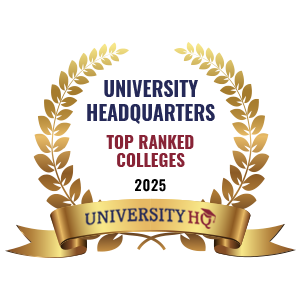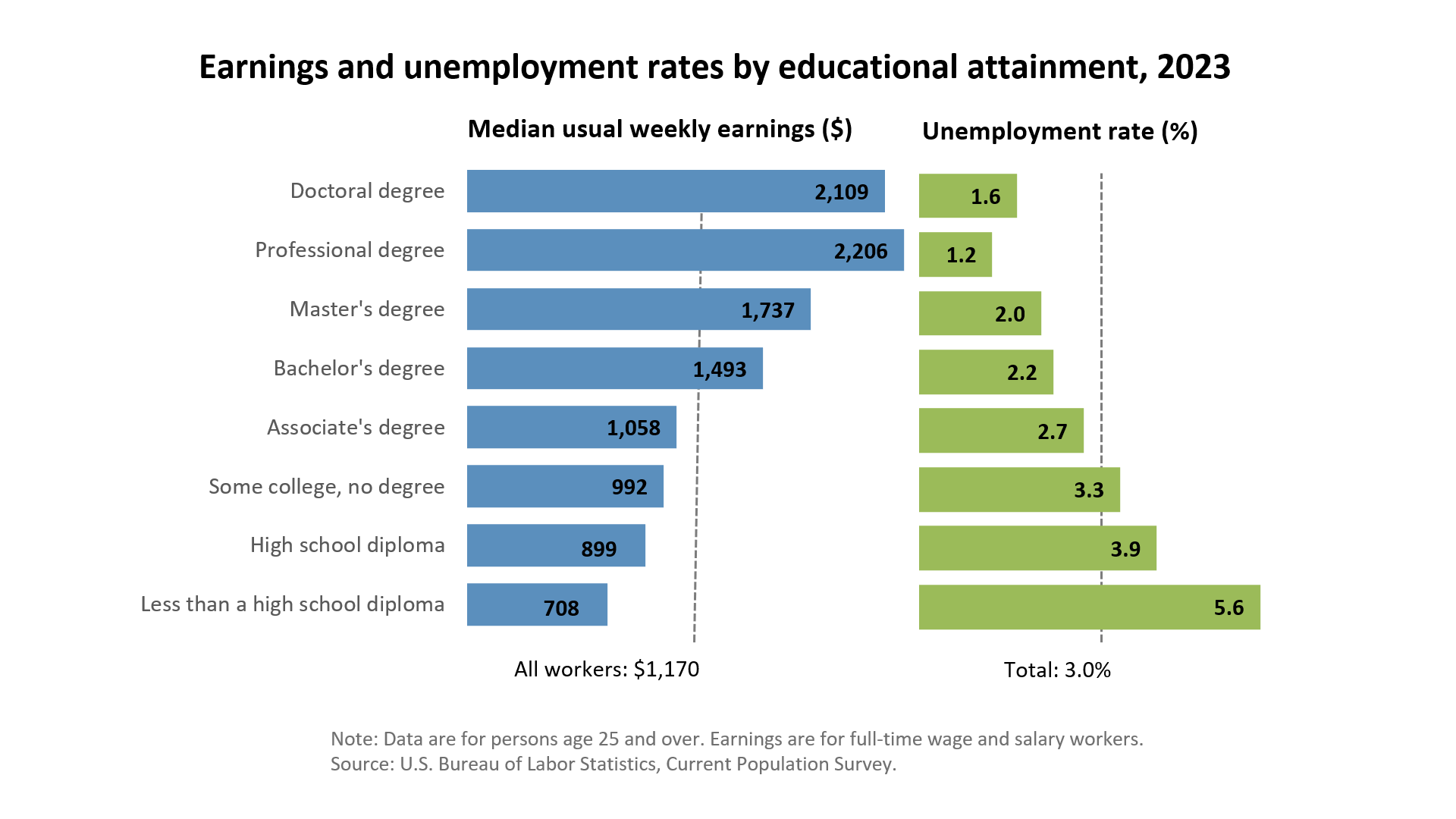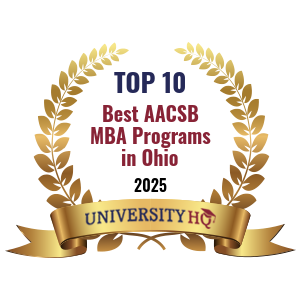Get Matched With Online Colleges
This educational institution is a private, not-for-profit university within a midsize city. When you arrive on-campus for a visit or to move in, you might want to consider setting aside some time to look around and get your bearings. Buildings and parking lots are located close together —and, with the relative size of the physical campus, you’ll have to hurry to get to your next class if it’s all the way across on the other side.
Search All Programs
Overview of University of Dayton
You’ll notice two Catholic churches on-campus. The university is affiliated with the Roman Catholic Church. These churches are the Holy Angels Church and the Chapel of the Immaculate Conception. Each parking lot on campus, designated by a letter of the alphabet, will be reserved for students or faculty and staff.
The university offers campus housing and it’s a good idea to live in the dorms for at least the first academic year, so you are able to get used to a new location and environment. You’ll also be closer to activities and the library for your study and research sessions. And you’ll be able to meet fellow students and form new friendships and study groups.
General Information
| School Type | Private not-for-profit |
|---|---|
| Campus Setting | City: Midsize |
| Campus Housing | Yes |
| Student Faculty Ratio | 14:1 |
| Graduation Rate | 82% |
| Year Founded | 1850 |

Student Enrollment
Total Students11,473
8,483
2,990
Undergraduate Student
Male 4,411
Female 4,072
Graduate Student
Male 1,555
Female 1,435
Explore Map
Top Rankings For University of Dayton
Admissions
APPLICATIONS17,462
ACCEPTANCE12,573
Acceptance Rate72%
Enrollment 2,012
| Admissions | |
|---|---|
| Application Fee | NA |
| High School GPA | Required |
| High School Rank | Recommended |
| High School Transcripts | Required |
| College Prep Courses | Required |
| Recommendations | Required |
| SAT/ACT | Required |
| TOEFL (Test of English as a Foreign Language) | Required |
| Application Deadline | November 1 |
| Common Application Accepted | Yes |
Tuition Cost & Financial Aid
The entire cost of attendance for one recent academic year was $60,900. This included tuition, books, supplies, room, board, and other charges. However, that doesn’t necessarily mean that you or your family will have to cover the entire amount.
Universities, including private ones, reduce their cost of attendance by helping their students find financial aid. This aid lowers the average net cost. For the 2018-2019 school year, this was $33,372 but, depending on how much your family made in the most recent tax year, you may not end up paying this full amount either. Instead, your net price will reflect your income level because that is how financial aid is awarded. The average net price is the cost to the student after financial aid has been applied to tuition and other fees and charges.
Families that earned $30,001 to $48,000 in recent academic years had a net price of $23,351.
Financial aid for beginning students assisted 97% of the freshman class in this year. Slightly less (95%) obtained grants or scholarships averaging around $25,858; and the same percentage of students averaged $24,911 in institutional grants and scholarships.
| Average net price | 2018-2019 |
|---|---|
| Net Price | $33,372 |
| Average Total Aid | $25,858 |
| Students Receiving Financial Aid | 97% |
| Room & Board | $14,050 |
Sticker Price
- Tuition In-State - $44,100
- Tuition Out-of-State - $44,100
- Books and Supplies - $1,000
- Room & Board - $14,050
- Other - $1,750
Academics
You may have decided on your major already even though you can’t officially declare it yet. Take a look at the most popular degree programs at the University of Dayton. One of them may be yours. These include business, management, marketing and related support services; engineering; education; biological and biomedical sciences; and health professions and related programs.
You may hear terms like “graduation rate and retention rate”. These may be important to you—they are certainly important to the university. The retention rate is 89%. This is the percentage of incoming students are retained when they return to the same university for their second year of classes. The graduation rate is affected by how many students graduate within a set amount of time (usually four years and six years). The 4-year graduation rate is 65% and the 6-year rate is 82%. And the student to faculty ratio is not too high but sits at 14 to 1 for the total student population of just under 11,500.
If, for one reason or another, you have a time conflict with one of your classes and you need both classes to graduate, your adviser may tell you that distance learning or online classes are an option, but evening classes are not offered.
Retention
Rate
4 year
Graduation
Rate
6 year
Graduation
Rate
Student Population Total
Student Population 11,473
8,483
2,990
Most Popular Programs & Majors
(# of Diplomas Awarded by Subject)
| All Business Majors | 531 Total Graduates / 27% |
|---|---|
| Marketing/Marketing Management, General | 170 Graduates |
| Finance, General | 121 Graduates |
| Accounting | 78 Graduates |
| Business/Managerial Economics | 41 Graduates |
| All Engineering Majors | 423 Total Graduates / 21% |
| Mechanical Engineering | 224 Graduates |
| Chemical Engineering | 77 Graduates |
| Electrical and Electronics Engineering | 52 Graduates |
| Civil Engineering, General | 40 Graduates |
| All Education Majors | 152 Total Graduates / 8% |
| Early Childhood Education and Teaching | 59 Graduates |
| Secondary Education and Teaching | 28 Graduates |
| Special Education and Teaching, General | 25 Graduates |
| Special Education and Teaching, Other | 16 Graduates |
| All Biological & Biomedical Majors | 138 Total Graduates / 7% |
| Biology/Biological Sciences, General | 89 Graduates |
| Environmental Biology | 25 Graduates |
| Exercise Physiology | 17 Graduates |
| Biochemistry | 7 Graduates |
| Health Professions and Related Programs | 132 Total Graduates / 7% |
| Pre-Medicine/Pre-Medical Studies | 61 Graduates |
| Pre-Physical Therapy Studies | 36 Graduates |
| Dietetics/Dietitian | 17 Graduates |
| Music Therapy/Therapist | 9 Graduates |
| All Other Diplomas | 31% |
Outcome & Salary
The hope is that you will have the chance to accept your first job offer right out of college, hopefully in the field you’re trained for. Here are a few numbers you should keep in mind as you consider which school to attend, as it may impact your future earnings.
Graduates from the University of Dayton earn early-career salaries of $57,400 and mid-career salaries closer to $105,000. After 10 years, that makes their salary earnings potential $719,320 and their 20-year potential may be as high as $1,769,320. If you deduct the 4-year cost of education ($133,488), you can see that graduate’s 10-year projected return on investment (ROI) is $585,832 and their 20-year ROI is $1,635,832.
On the other hand, high school graduates earn a national average, annual salary of $38,792. Their 10-year projected income is $349,600 and their 20-year projected income, $775,840.
| Graduates Salary | |
|---|---|
| College Grads Early Career Salary | $57,400 |
| College Grads Average Salary | $71,932 |
| College Grads Mid Career Salary | $105,000 |
| Return on Investment (ROI) | |
|---|---|
| 10 Year Salary Earnings Potential | $719,320 |
| 20 Year Salary Earnings Potential | $1,769,320 |
| Cost of Education (Net Price) 4 Year | $133,488 |
| 10 Year Projected ROI | $585,832 |
| 20 Year Projected ROI | $1,635,832 |
| No College Education Salary Comparison | |
|---|---|
| National Average Salary | $38,792 |
| 10 Year Projected Income | $387,920 |
| 20 Year Projected Income | $775,840 |

Photos & Videos
sources:
Related Top College Resources
















